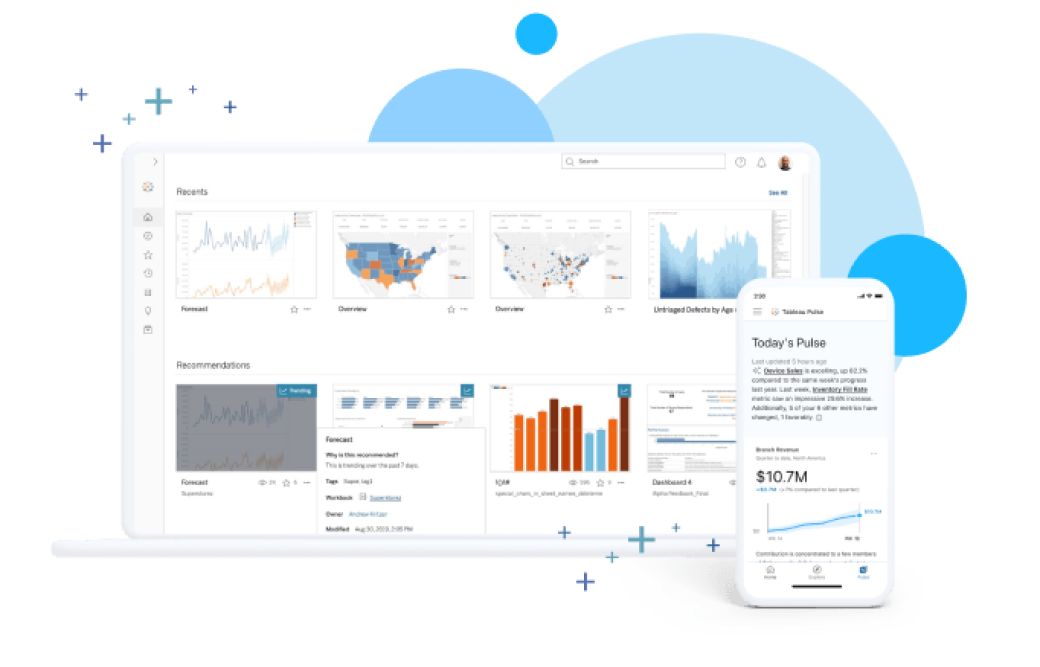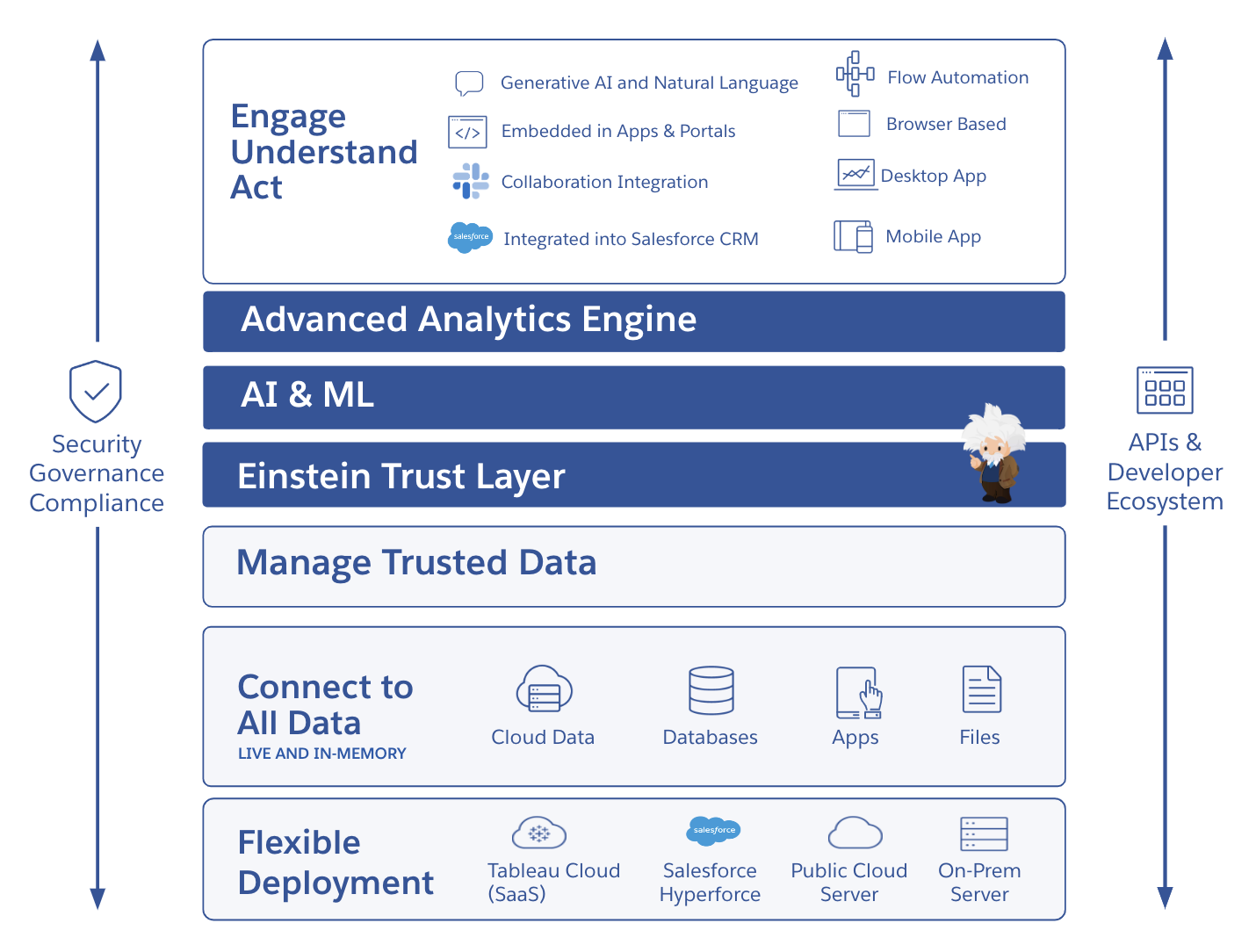
Börja med data. Gå vidare med Tableau.
Tableau erbjuder en lättanvänd molnplattform för självbetjäningsanalys som är utformad för att leverera insikter där du arbetar. Med Salesforce Einstein kan du snabbt implementera pålitlig AI för data- och analysanvändningsfall, som sträcker sig djupt in i det semantiska lagret och arbetsflödena. Med inbyggd datastyrning, säkerhet och efterlevnad ger Tableau dig största möjliga urval och flexibilitet i takt med att din teknik och AI-strategi utvecklas.
Tableau har åtagit sig att stödja behoven hos organisationer världen runt. Detta stora partner- och framgångsekosystem, som bland annat innehåller det engagerade Tableau-communityt, utbildar, stödjer, utmanar och firar dig i varje steg av din AI-resa.
Huvudfunktioner
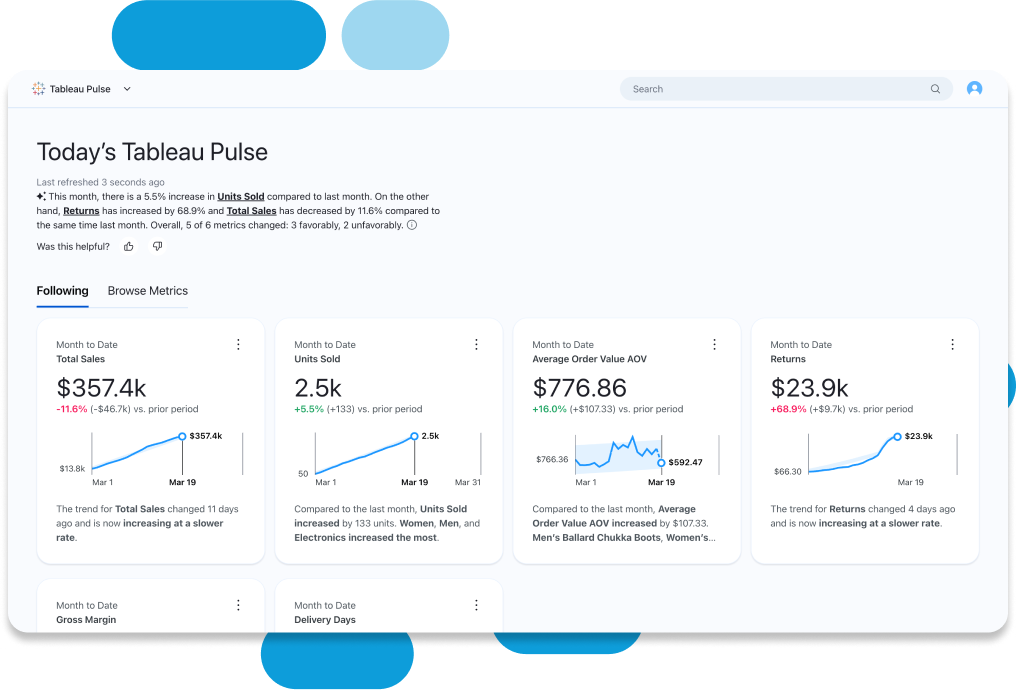
Intuitiva dataupplevelser för alla
Fatta bättre beslut genom att utforska data på ett enkelt sätt med Einsteins inbyggda insikter. Med en snabb visuell översikt av dina data och bakomliggande automatisering berikar Tableau automatiskt analysdata med affärskontext och mening. Detta hjälper dig att upptäcka och förstå relevanta data. Med VizQL är datautforskning lika enkelt som att dra och släppa. Snabba upp din analys genom att lägga till automatiserade och lättförståeliga berättelser i dina dashboards, använd naturligt språk för att utforska och besvara viktiga affärsfrågor och anpassa mätvärden med Tableau Pulse.
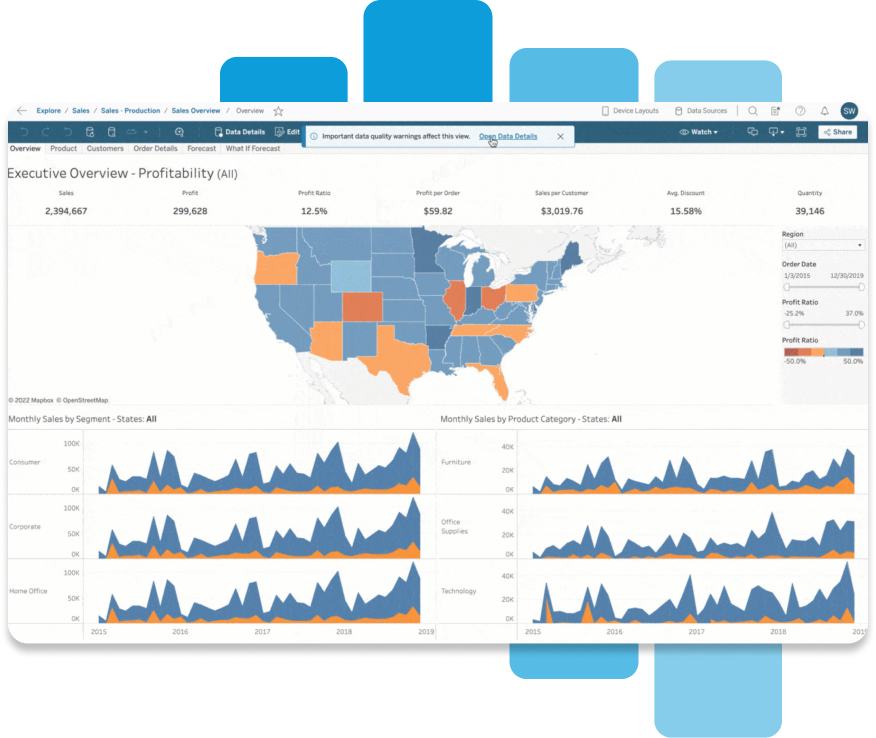
Tillit och förtroende till data
Gör säkra, betrodda data tillgängliga där du behöver dem, samtidigt som du säkerställer transparens, styrning och kontroll. Integrera med enkel inloggning (SSO) eller din identitetsleverantör. Uppfyll efterlevnadskraven genom att övervaka användningen i en och samma miljö. Använd en uppdaterad infrastruktur med högklassiga standarder för säkerhetscertifiering som SOCII och ISO. För Tableau Cloud Enterprise, Tableau+ eller Tableau Server Enterprise kan datahanteringsfunktioner skala betrodda data på ett enkelt och reproducerbart sätt.
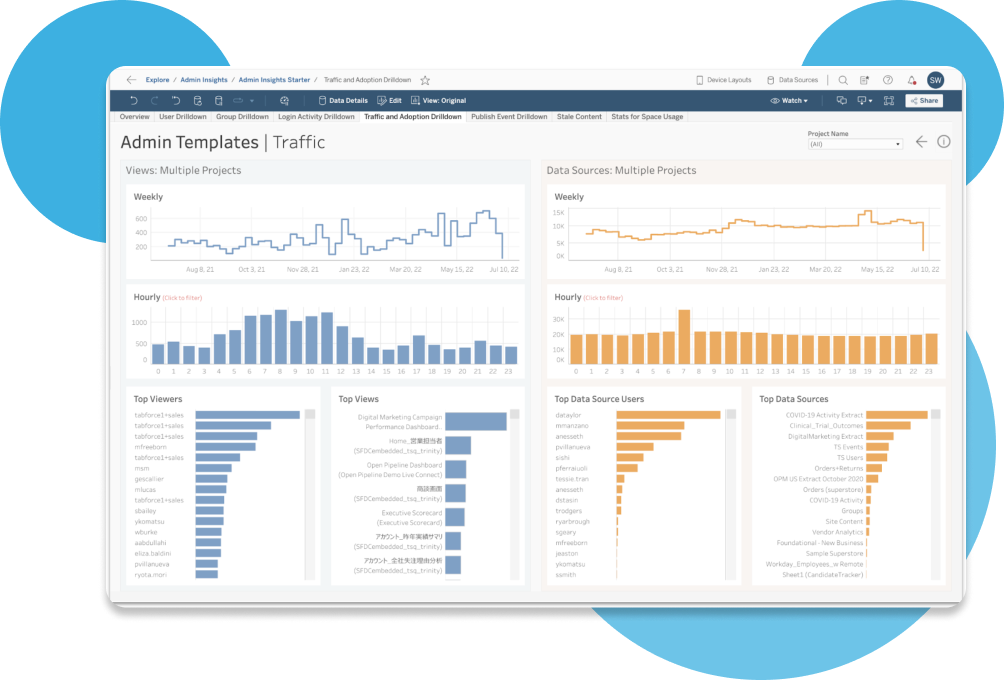
Skala på ett enkelt sätt med en öppen och flexibel plattform
Bygg och skala dataarkitektur på ditt eget sätt med återanvändbara modeller och analyser. Du behöver inte konfigurera servrar, hantera programuppgraderingar eller skala hårdvarukapaciteten – och du sparar tid och pengar. Med Tableau får du fart på teamarbetet genom att upptäcka, dela, samarbeta och utforska data från din mobila enhet, surfplatta eller dator. Bygg och skala upp verksamhetskritisk analys på ett enkelt sätt samtidigt som du behåller kontrollen över Advanced Management-funktionerna. Det ger dig obegränsad skalbarhet, optimal effektivitet och förenklad säkerhet. Förbättra dina insikter och analyser med mätvärdeslagret i Tableau Pulse genom att skapa en standarddefinition av din data. Få tillgång till inbyggda appar och kickstarta din analys med acceleratorer, kopplingar, tillägg och mycket mer.
Utforska Tableaus produktportfölj
Tableau Prep
Ett modernt sätt att förbereda data gör det enklare och snabbare att kombinera, forma och rensa data för analys.
Tableau Desktop
Utforska, visualisera och analysera alla dina data för att få fram dolda insikter och fatta smartare beslut snabbare.
Tableau Cloud
Upplev en helt värd- och molnbaserad lösning som är AI-driven på världens främsta analysplattform.
Tableau Server
Driftsätt Tableau själv lokalt eller i det offentliga molnet och få oöverträffad kontroll och flexibilitet.

I takt med att organisationen växte i form av mängden data växte också kraven och det blev dyrare. Vi behövde en plattform som kunde utvecklas med våra behov och som kunde skalas.
Så kommer du igång med Tableau-communityt
Gå med i ett community som stöder din data- och analysresa, lyfter dina kunskaper i datavisualisering till nästa nivå och odlar värdefulla kontakter. När människor förenas kring data är ingenting omöjligt.
Gå med nu